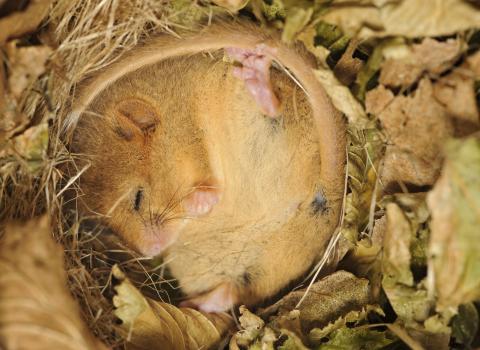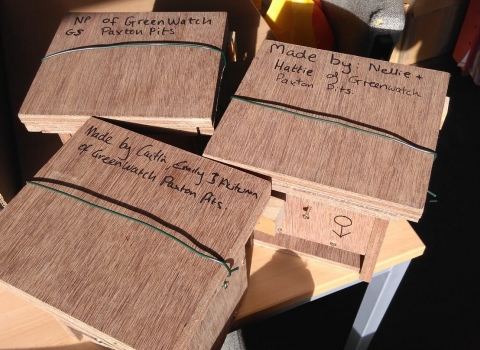The successful reintroduction of dormice into Brampton Wood, Cambridgeshire, began over 20 years ago but where will they go next? We need more dormouse nest boxes to find out.
In 1993 Brampton Wood was chosen to become the first reintroduction site for the dormouse species recovery programme in the country, to help recolonize this part of Cambridgeshire.
To monitor the success of the reintroduction project, nest boxes were set up in the release area and have been checked on an annual basis since then. In 2011 the Wildlife Trust incorporated the box checks into the monitoring programme of the local Ecology Groups volunteers.
A successful new design for dormice
In order to expand the monitoring beyond Brampton Wood it has been necessary to refine the methods and equipment used. The brief was to make wooden nest boxes that were much more dormouse (small mammal) specific, to avoid disturbance to other rare species and to make them more waterproof and efficient to check, making best use of the time donated by Ecology Groups volunteers.
A new box design, The Brampton, has been developed and has proved very successful in preventing wasps, hornets and birds from claiming the box for themselves.
In one trial no birds were found in over 250 ‘Brampton’ boxes, while approximately half of the standard design were occupied by birds, wasps and hornets.
This will mean a much more natural balance of birds and other wildlife in the wood. The boxes have also proved to be drier inside and easier to check, and the dormice are using them as well!
The new design attracted great interest at the 2013 dormouse monitoring conference and as requested we have attached the plans for 'The Brampton' below.
You can help the dormice
Ecology Group volunteers are now investigating where our local dormice are spreading to in the Living Landscape in Cambridgeshire and Northamptonshire, to see how well wildlife habitats are linked together. Our work inludes Royal Hunting Forests, such as Rockingham Forest and Salcey Forest, as well as Brampton Wood and the surrounding countryside.
If you would like to help out why not build a dormouse box and donate it to help monitor dormice? You can find out more infomation about dormice and the nest box design by downloading our fact sheets below.
To donate a nest box email Josh Hellon, Monitoring & Research Manager: josh.hellon@wildlifebcn.org
A valuable and protected species
The dormouse is naturally rare and has suffered a decline in this country, and so is strictly protected under law.
The deliberate capturing, disturbing, injuring and killing of dormice is prohibited, as is damaging or destroying their breeding sites and resting places. As a result our work involving these special animals and their habitat is carried out with the relevant consents, and our voluntary dormouse monitors are trained and licensed to carry out the fieldwork.


